Skins Concept Art for MOBA Games: Process & Specifics
MOBA games revolve around the playable characters, which gives certain specifics to the character design. It’s a wide and popular subject since producing a character involves so many different areas of expertise.
According to a videogame research firm EEDAR, revenues in MOBA games come mostly from avatar cosmetics—meaning, selling skins or other customization options for characters. This article will talk about the concept artist’s role in creating 3D character skins for MOBA games.
Design Process
What are the stages of the work of 3D character skin concepting? Are they different from character design?
Character design has a similar workflow regardless of the game: it starts with idea generation, research, and character drafting. To help with the design process, I prefer making a mood board, then preparing several sketches for the client to pick from, and once the character has a design. I start working on the colors and making all the concepts required, such as different angles and movement sheet, to help the animator capture the character’s theme and personality. After that, the character gets modeled, rigged, and animated.
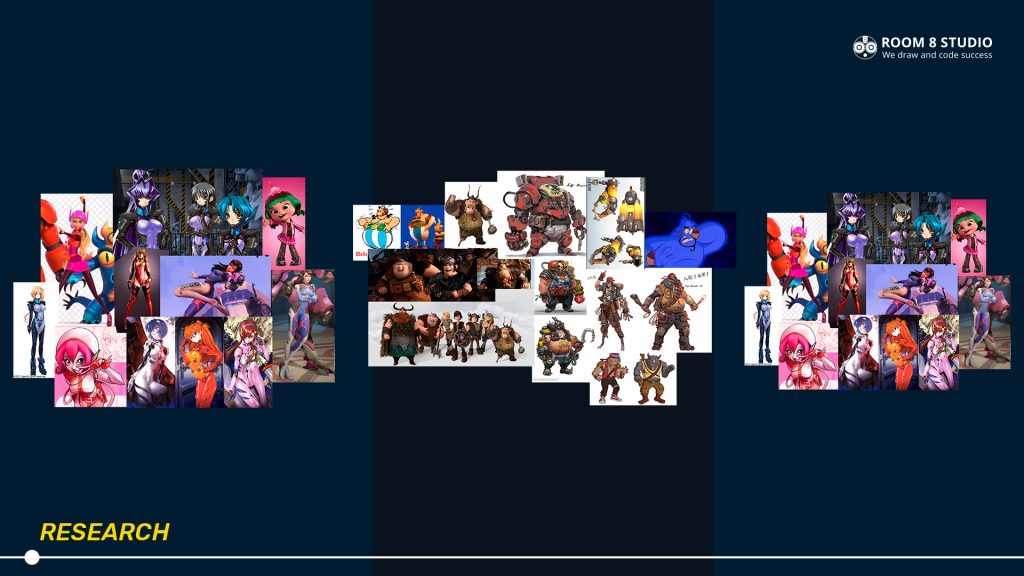
Making a skin is mostly the same: it begins with an idea. The idea may come from a nice visual effect, the need for specific mechanics, or the game’s background story. Important to remember that you need functional skins, and if forced to choose, one should always go for a practical solution rather than just the “pretty” one.
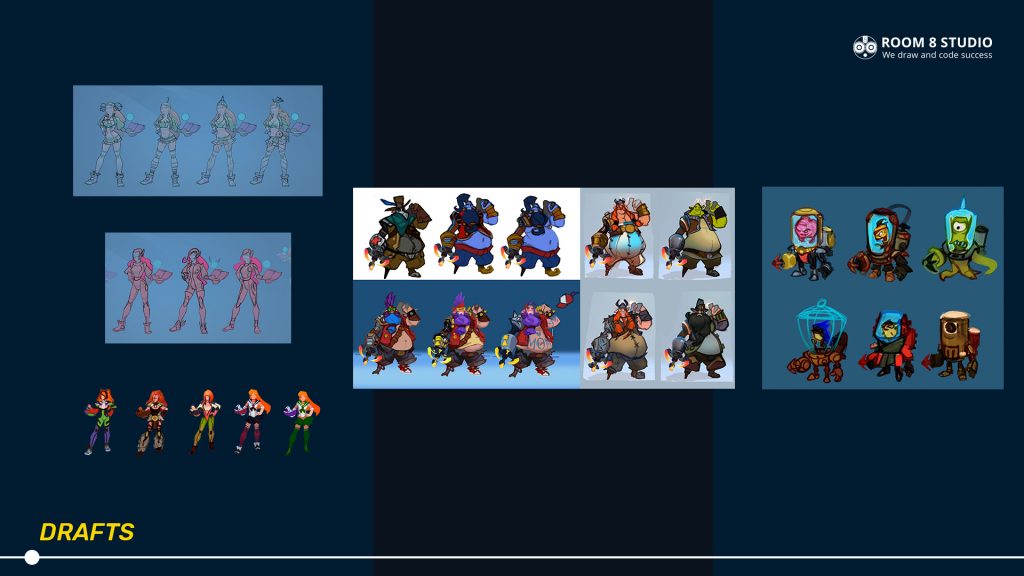
After that, I proceed with drafting. The point of drafting is to try out different ideas quickly. Usually, the number of drafts goes from 3 to 8, depending on the project. Something unique and distinctive has to be in every draft, such as composition, idea, or shape. The client picks the draft of choice or elements they like and asks to combine them.
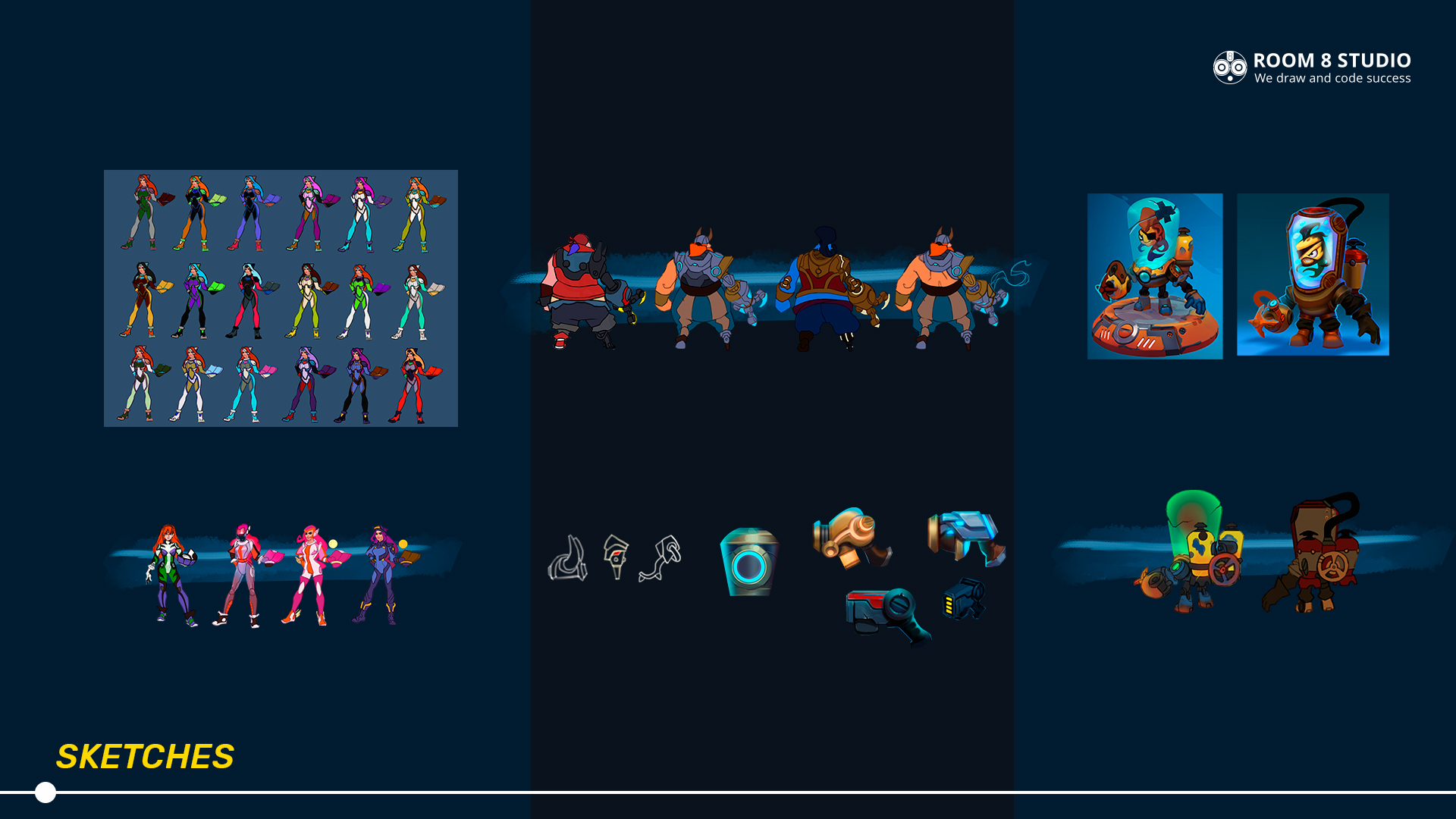
Then, I create detailed sketches according to the feedback, with cleaner lines and a thought-through design. Also, I suggest several coloring options. I polish it into final art once the character has a ready design, colors, and materials.
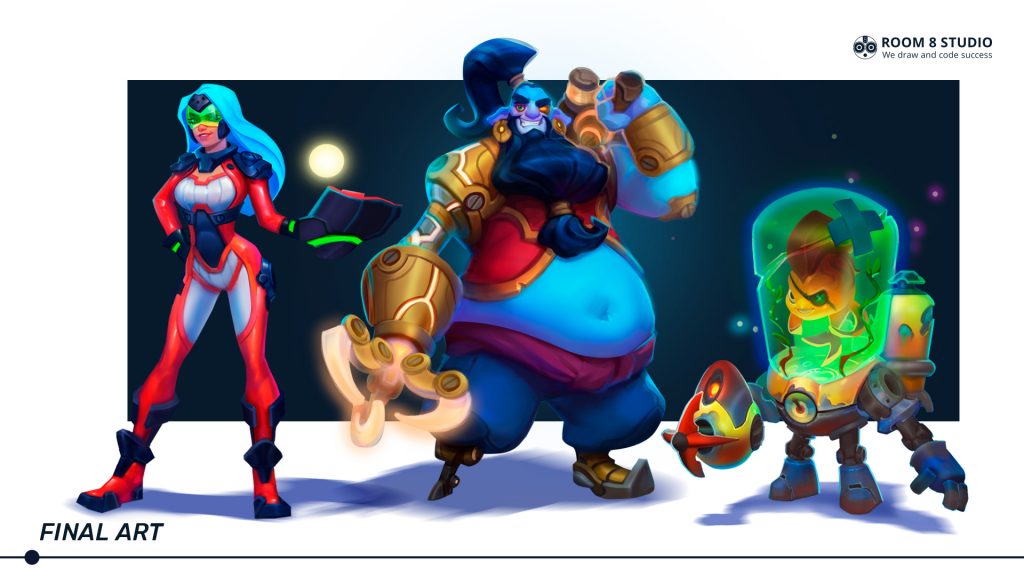
What happens next?
The character also needs a 3D model, animations, VFX, and visual design. These are rarely done by the same artist, making the concepting phases even more critical. So try to include a sheet depicting how the character moves and, if there’s a need for it, the visual effects of the character and movement.
The best practice is to have an open line of communication between the concept artist and 3D artists. It would be perfect if I could talk to a 3D guy and explain what I meant by the concept and how it should look in a model.
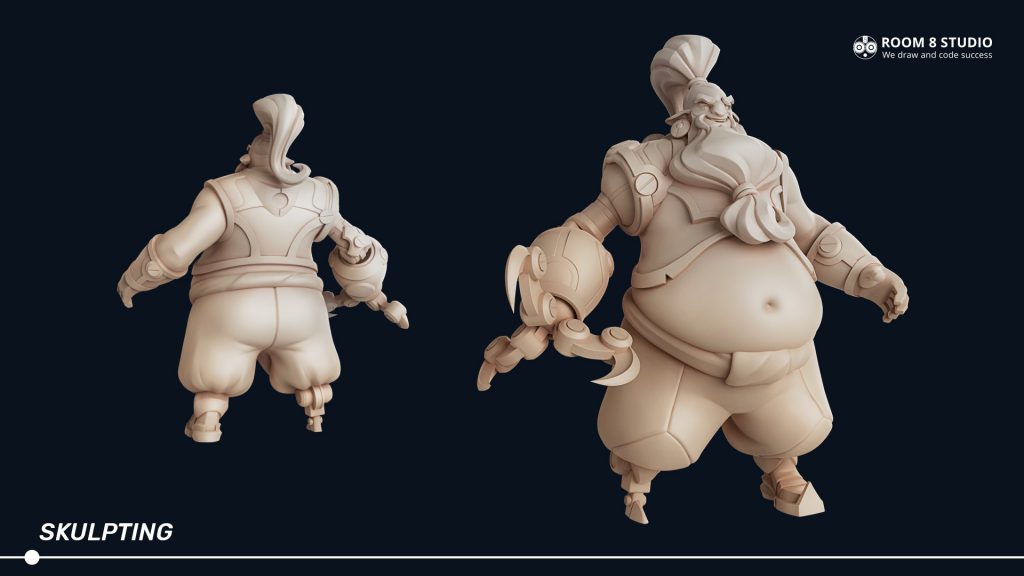
If there’s a good art director, they control the process at all stages and make sure that assets are of high quality and the concept is well-translated into a 3D model, and, finally, will look good in the game.
How long does it take to go through the whole process, from sketch to final artwork?
It depends on the project. Sometimes it can take as little as one day for ideas generation and the creation of 8 drafts, and then another two days to create the final art.
Skin Design Workflow Specifics
From the artist’s perspective, what’s different about designing skins compared to character concepts?
In multiplayer games, skins present an alternative version of the character or provide enhancements to the character’s appearance. So, designing skins requires a little different mindset; one has to think about evolving the character and current trends.
For publishers and developers, the main point of skins is to make them new and appealing enough to sell them for real money. In such cases, companies may even put more effort into the skin creation than in the original character design; artists give it special visual effects and more complex textures. The new skin set may be dedicated to some holidays, recent events, fashions, etc.
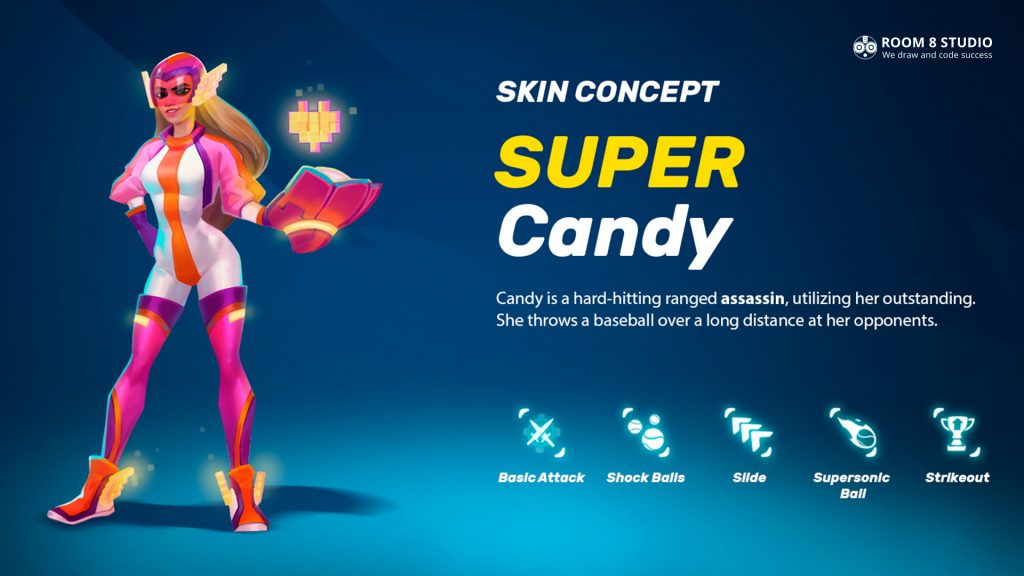
So from an artist’s perspective, I’d say it’s vital to stay up to date and use current trends, hype news, and fashions when creating skins. We at Room 8 Studio love how our works give enormous enjoyment to players when they buy skins we’ve created and use them often.
Is there anything to keep in mind when creating skins for MOBA games?
MOBA games are traditionally viewed top-down, with a fixed camera that can only be moved in one dimension. This means that the characters’ skins must be designed, modeled, and animated, so they work from that perspective and remain recognizable to the player.
Due to MOBAs usually dividing the players into teams of five, there can be ten characters on the screen simultaneously, not including the NPC creatures and VFX nor the characters’ skills that may multiply the number of characters. These characters should be unique enough to stand out and simple enough not to overload the hardware.
Is there a difference in designing skins for PC, consoles, and mobile games?
The principles are the same. The difference may be in the camera position, angles, or resolution. Say, if a character is seen from the back, the artist has to think through how they should look from this perspective.
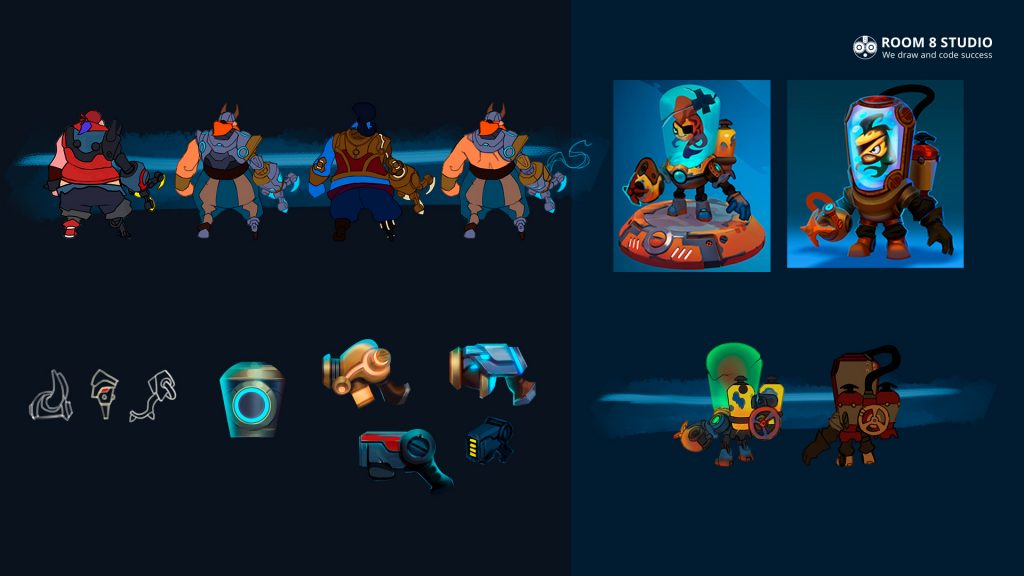
How do skins look consistent in terms of style and overall appearance?
We stick to art guidelines for that. It’s crucial to have a detailed style guide in cases of very stylized projects so that stylistic techniques are traced in all elements in concept, model, and final work.
There are different levels of detailing as well, which depends on the style of the project. Usually, clients specify the level of detailing in the technical task or describe examples of games they like.
Is there a particular approach to creating skins concepts in a short timeframe?
Less time means rougher sketches and fewer variants. This approach is easier to execute if trust has already been established between the artist and client. We have project leads that control the quality per project. Constructive feedback from the client is vital for us to be able to fix something since art is highly subjective at times.
Skills for Concept Artist
Does the concept artist need to know 3D or other tools and skills outside of concept art?
Since it’s never specifically one person responsible for the whole character creation – it is created together by concept artists, VFX artists, modelers, and animators – yes, concept artist has to have at least basic knowledge of these areas. Knowledge of 3D software helps me enormously: Maya, Zbrush, and texturing tools. I use them for some of the modelings for my illustrations, for example, to search for a camera position for an illustration, looking for an interesting perspective, or model certain parts of the design which may take longer drawing and so it’s easier to model them utilizing these 3d tools.
What are the skills needed to become a good concept artist?
A professional character artist must know anatomy, perspective, layout, and composition. They should also have the necessary skills for making video game art, such as digital painting, understanding lighting and materials, and how to draw expressions and movements.
When designing for MOBA games, it is essential to understand the game’s mechanics.
What helps you to become a good artist?
I think it’s important to have hobbies, spare time for self-education, try modeling, animation, graphics, art, etc. All this helps to develop artistic skills.
It also helps to have various interests and keep up with trends: almost anything can suddenly inspire. I graduated as a fashion designer. While I never wanted to proceed with my career as one, knowing clothes cut and fabric properties helps me work as a concept artist when creating outfits and skins.
Summing up
Character design for MOBA games is quite a time-consuming process that demands effort and the ability to work and communicate well with others, especially on big projects. For a successful character design aimed at a large audience, all these people should be capable of working together to communicate their ideas and create content that compliments each other’s work.
While it’s hard to find skillful artists with the needed style to make a game stand out, experienced teams offer workflows to make creativity sustainable and scale art deliveries for large projects.
Does your game need great skins or character concepts? Let’s talk!



